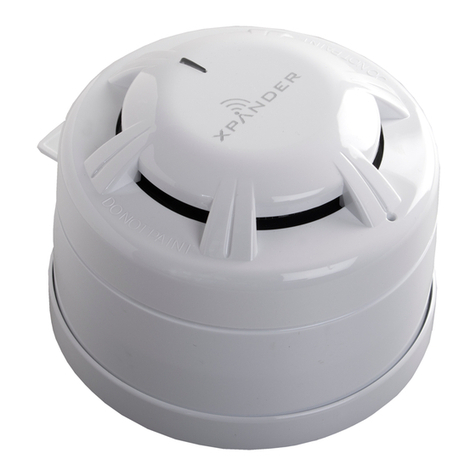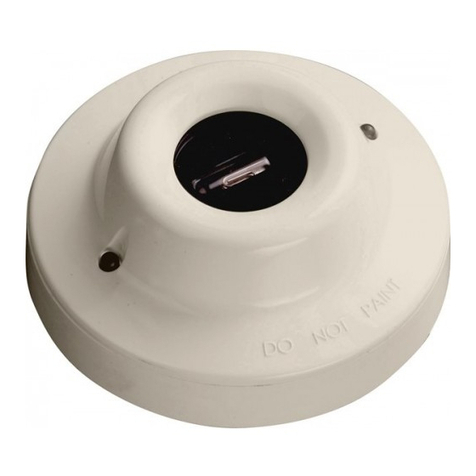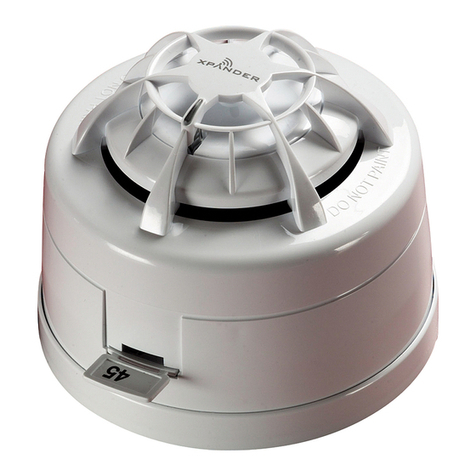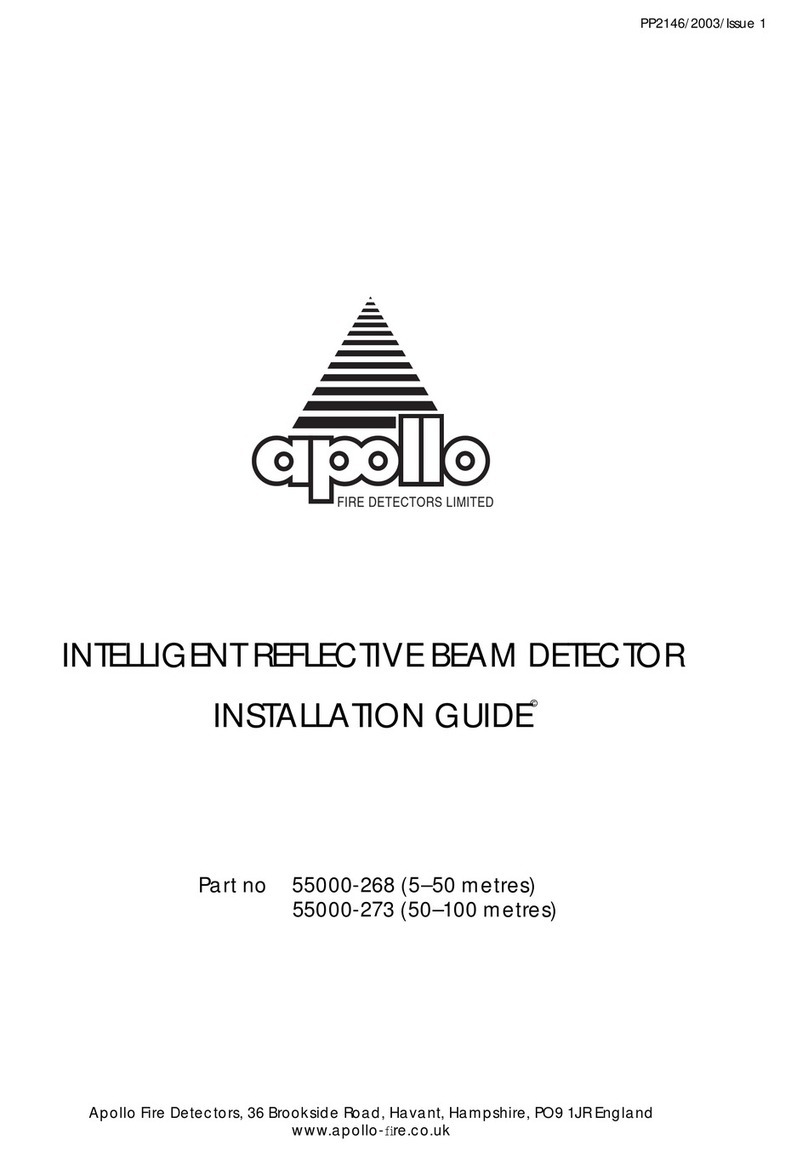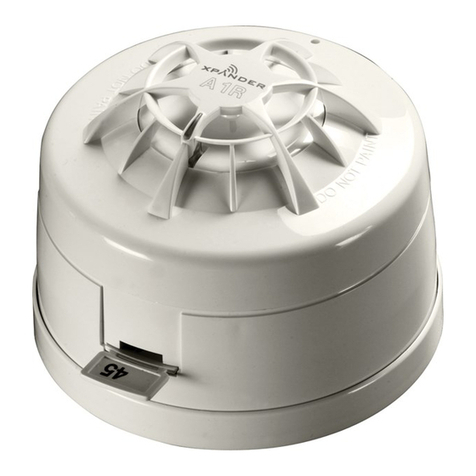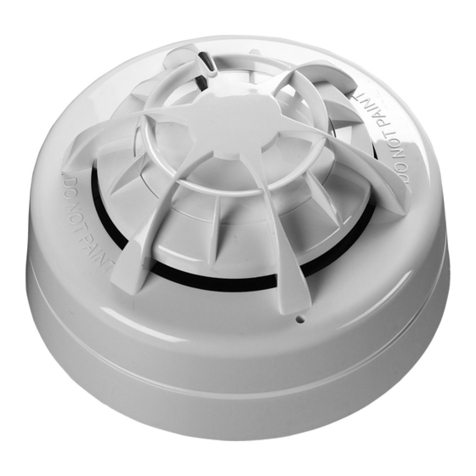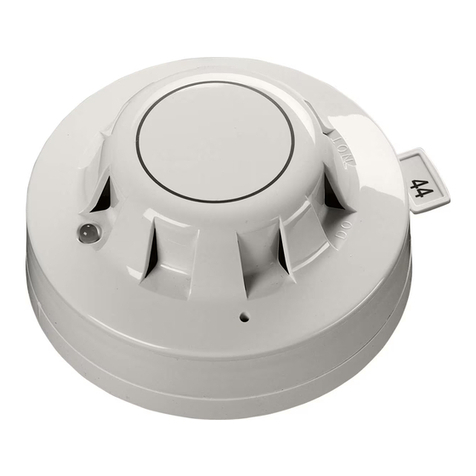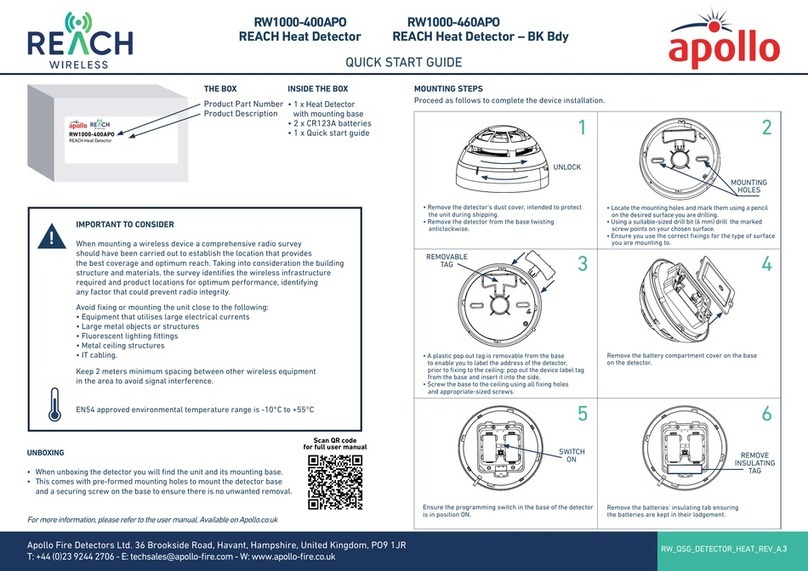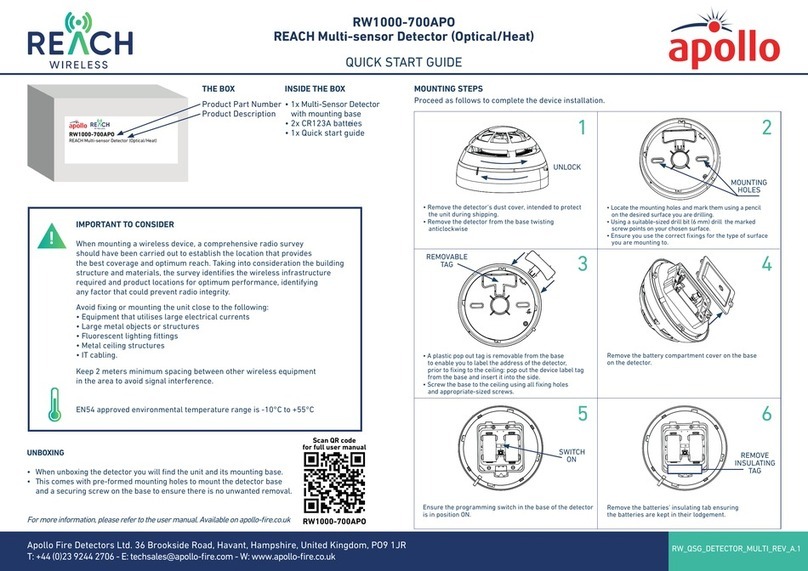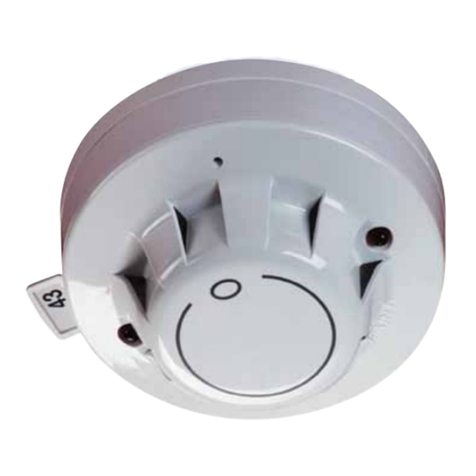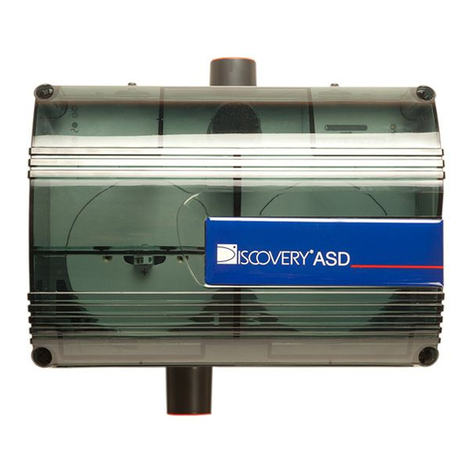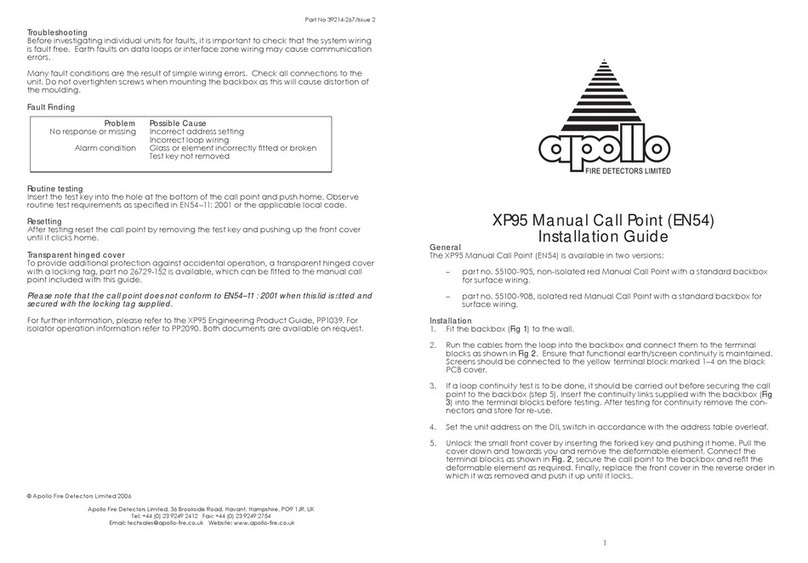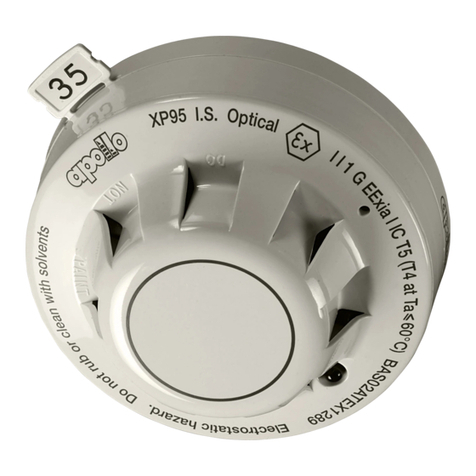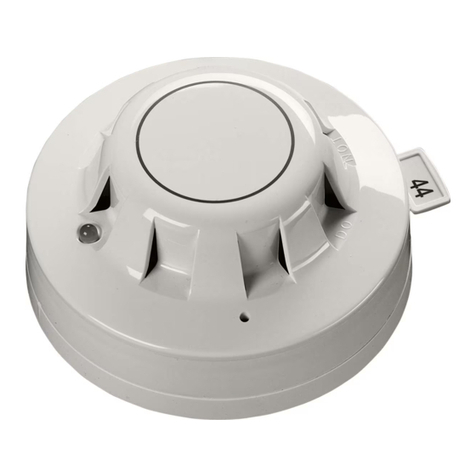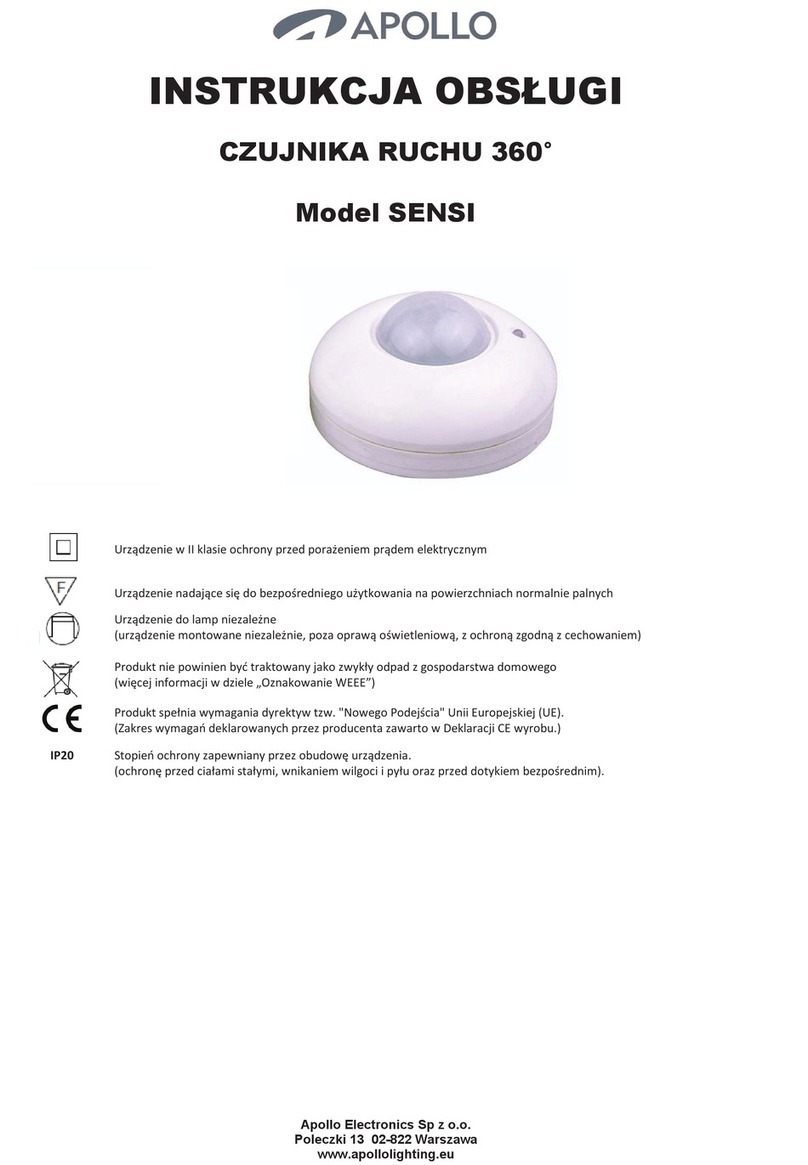
4 5
Address Setting
Before installing the flame detector it is necessary to set the address using the DIL switch,
which is accessed by removing the front cover, using a 5mm hexagonal key. 7 segments of
the switch are set to 0 or 1, using a small screwdriver or similar tool.
A complete list of address settings is shown in the following table.
DIL switch DIL switch DIL switch DIL switch DIL switch
setting setting setting setting setting
addr 1234567 addr 1234567 addr 1234567 addr 1234567 addr 1234567
1 1000000 11 1101000 21 1010100 31 1111100 41 1001010
2 0100000 12 0011000 22 0110100 32 0000010 42 0101010
3 1100000 13 1011000 23 1110100 33 1000010 43 1101010
4 0010000 14 0111000 24 0001100 34 0100010 44 0011010
5 1010000 15 1111000 25 1001100 35 1100010 45 1011010
6 0110000 16 0000100 26 0101100 36 0010010 46 0111010
7 1110000 17 1000100 27 1101100 37 1010010 47 1111010
8 0001000 18 0100100 28 0011100 38 0110010 48 0000110
9 1001000 19 1100100 29 1011100 39 1110010 49 1000110
10 0101000 20 0010100 30 0111100 40 0001010 50 0100110
51 1100110 61 1011110 71 1110001 81 1000101 91 1101101
52 0010110 62 0111110 72 0001001 82 0100101 92 0011101
53 1010110 63 1111110 73 1001001 83 1100101 93 1011101
54 0110110 64 0000001 74 0101001 84 0010101 94 0111101
55 1110110 65 1000001 75 1101001 85 1010101 95 1111101
56 0001110 66 0100001 76 0011001 86 0110101 96 0000011
57 1001110 67 1100001 77 1011001 87 1110101 97 1000011
58 0101110 68 0010001 78 0111001 88 0001101 98 0100011
59 1101110 69 1010001 79 1111001 89 1001101 99 1100011
60 0011110 70 0110001 80 0000101 90 0101101 100 0010011
101 1010011 106 0101011 111 1111011 116 0010111 121 1001111
102 0110011 107 1101011 112 0000111 117 1010111 122 0101111
103 1110011 108 0011011 113 1000111 118 0110111 123 1101111
104 0001011 109 1011011 114 0100111 119 1110111 124 0011111
105 1001011 110 0111011 115 1100111 120 0001111 125 1011111
126 0111111
Table 2 DIL switch address settings
We recommend that the address be set before the flame detector is mounted on the wall.
Sensitivity Setting
The eighth segment of the DIL switch referred to in the previous section is used to set the
sensitivity of the flame detector to class 1 or class 3. For most practical purposes the switch
should be set to class 1, the sensitivity required to detect flames as described in the section
‘Quantities required and positioning of detectors’.
In exceptional cases the flame detector may be set to class 3 operation in order to avoid
nuisance alarms being caused by radiation sources that are close to the detector and
cannot be moved.
To set the DIL switch to class 1, switch to position ‘1’. To set to class 3, switch to position ‘0’.
Installation
The flame detector is mounted using either the mounting plate, which is supplied with the
detector, or the adjustable mounting bracket, part no 29600-203, which is bolted to the
mounting plate.
The standard mounting plate (supplied) is used for horizontal viewing, eg, along corridors or
along the length of industrial processes or vertical viewing inside fume cupboards or over
hoppers. It has two fixing holes of 8.5mm diameter at 74mm centres.
The flame detector should be positioned at the perimeter of the room, pointing directly at
the area of the anticipated flame or at the centre of the area to be protected. If the detec-
tor cannot ‘see’ the whole of the area to be protected, one or more additional detectors
may be required.
The flame detector is not affected by normal light sources but should be positioned so that
sunlight does not fall directly onto the viewing window.
Loop Design
The XP95 flame detector is powered from the loop; it draws 2.2mA in quiescent state and
4.2mA in alarm. In order to determine the number of flame detectors that can be con-
nected to a given loop, please refer to the Loop Calculation program, which can be
downloaded from the Apollo website or requested from Apollo’s Technical Sales depart-
ment as a CD.
The flame detector has an angle of view of approximately 90°, as shown in the diagram
below.
Fig 2 Angle of view of XP95 Flame Detector
n
n
n
n
n
n
MÁFLAMESEEN
ATMINSTRAIGHTLINE
FROMFLAMEDETECTOR
MÁFLAMESEEN
ATMINSTRAIGHTLINE
FROMFLAMEDETECTOR
MÁFLAMENOTSEEN
ATMSINCEITISNOT
INTHEFIELDOFVIEWOF
THEFLAMEDETECTOR
M M
CENTRELINEOFDETECTOR DETECTIONOFMÁFLAME
DETECTIONOFMÁFLAME
© Apollo Fire Detectors Limited 2000-2005/RHD


